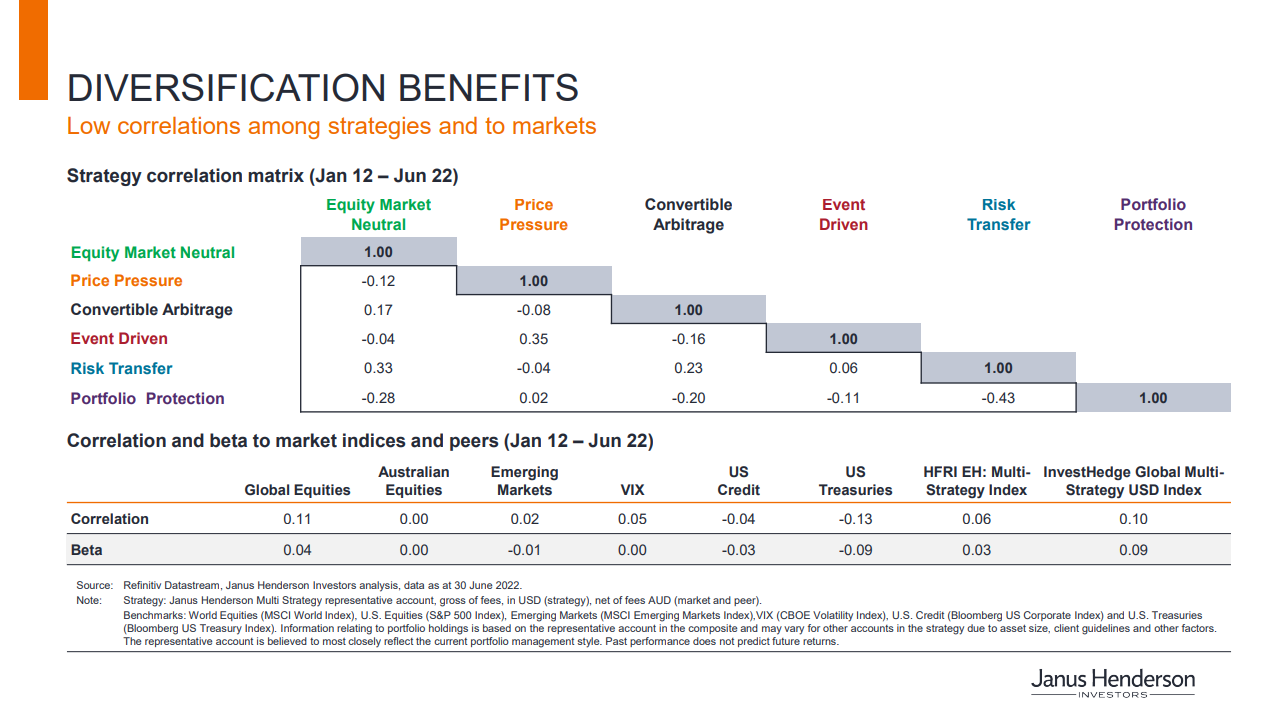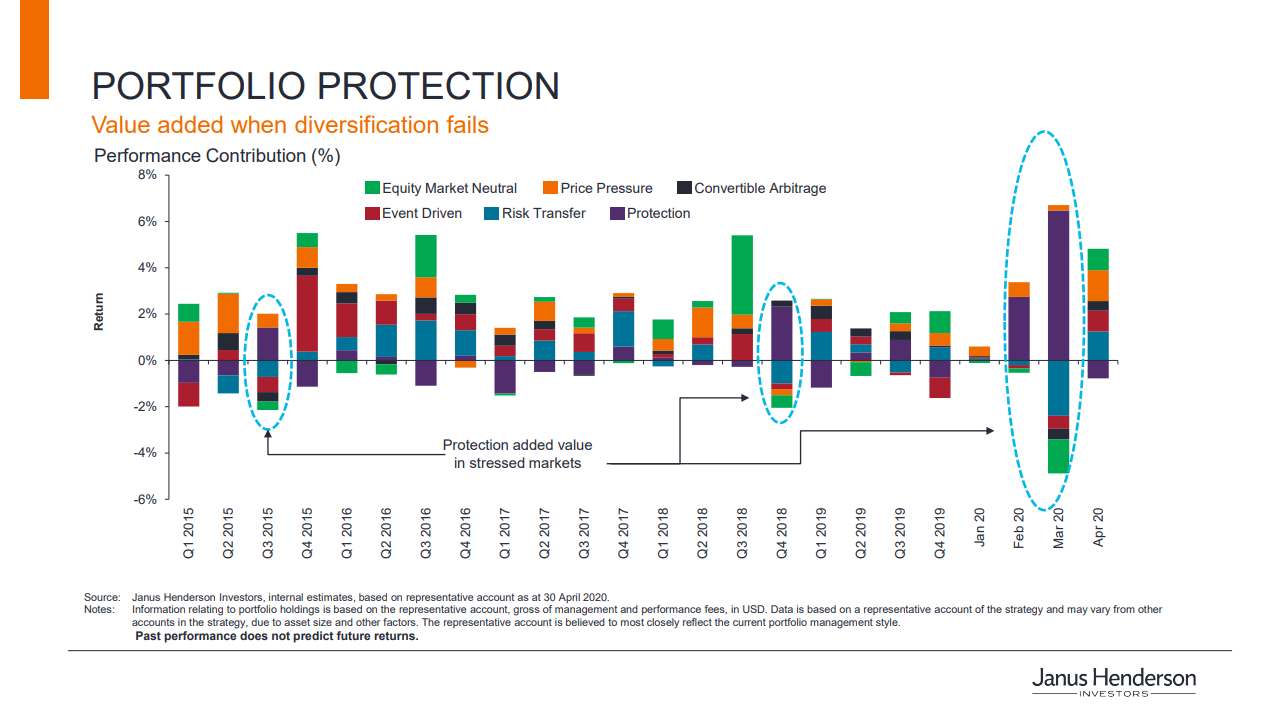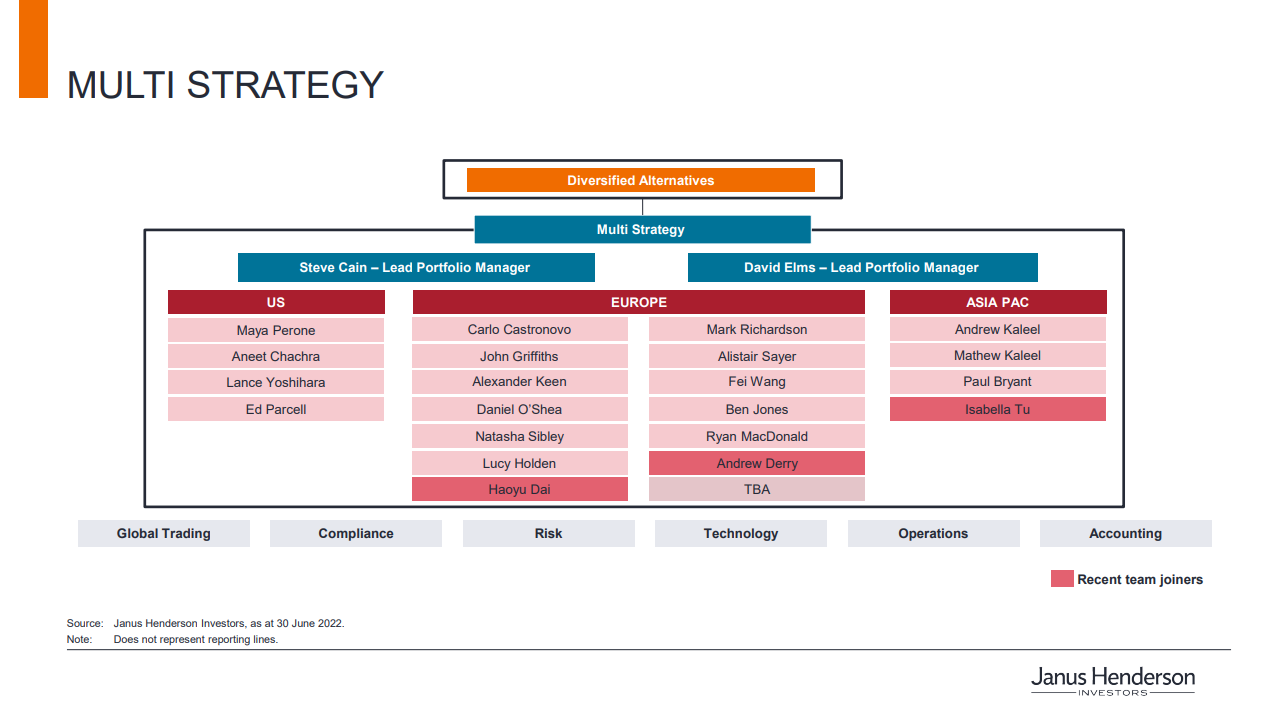Rolling with the punches: The fund designed to take the market hits and keep on coming
Mike Tyson once said, before a big fight, ‘everyone has a plan until they get punched in the mouth’. On the battlefield, the same sentiment is conveyed by the adage ‘no plan survives first contact with the enemy’.
However you want to phrase it, the same can be said of many investment plans. Rarely, if ever, do they survive big, sudden shocks in the market – the metaphorical punch in the mouth. The Janus Henderson Global Multi-Strategy Fund is built differently, however.
It is a combination of six broad strategy groups, five of which are ‘risk-on’ and the last of which provides portfolio protection – for when those punches in the mouth inevitably land.
In this Fund in Focus, I outline in greater detail the overall strategy, how it deals with high-risk environments, and the benefits of a well-crafted diversification profile for performance returns. All of which are critically important for investors in the current market environment.
Edited transcript below
Hi. I'm David Elms, and I'm here to talk about the Janus Henderson Multi-Strategy Fund.

I'd first like to introduce the fund. We see it as a turnkey alternative solution. It is a diversifying absolute return strategy, which is designed to perform in a variety of market conditions. It has a distinct range of return sources and is differentiated by having an explicit portfolio protection strategy. And in order to deliver this solution to clients, we have a stable and experienced global multi-strategy team.

What distinguishes the Janus Henderson Multi-Strategy Fund?
It's a set of team-developed skill-based strategies, and these strategies are managed on a market-neutral basis. Management is a combination of bottom-up and top-down with protection being a strategy that operates mostly on a top-down basis. We aim to produce attractive risk-adjusted returns with a target of cash plus seven gross of fees, and importantly, low correlations to global equities and expected volatility in a range of 4-8%.
So what does low correlation to global equities mean in a practical sense? The way we think about this is by considering when equities stress client portfolios the most. And what we've done is sorted the return of global equities into the worst periods and looked at the performance of our strategy in these periods. And as you can see, it does what it's supposed to do. It serenely sails through these environments.

Now, equities is not the end of the story, and certainly in 2022, as you can see from these slides where we've looked at global government bonds and also global credit, there are more sources of stress in the market at the present time. And so what we've done is similar to the equity side. We've taken the worst periods for global government bonds and also for global credit, and you'll note that about five of the worst 10 returns for each of those two asset classes have come in 2022. And we've also looked at the returns of our strategy in these environments. And similarly to equities, the strategy does not produce negative returns when client portfolios are likely to be under stress, therefore continuing to provide diversification to clients and positive returns when it's most needed.

So what is the underlying mechanism that drives this fund?
It's a combination of strategies, broad strategy groups. The first five of these strategies we call 'risk-on', and 'risk-on' means these strategies perform in up markets, flat markets and down markets. So the strategies are individually market neutral.
The sixth strategy, 'portfolio protection', is something different. As the name suggests, it's designed to provide insurance-style protection to the portfolio and deal with the situation where diversification falls apart, so markets are under stress, investors are panicking, liquidating risk in the market, and it's in this environment that portfolio protection is designed to produce strong positive returns. In other environments, inevitably, it suffers some negative returns as a cost of insurance - a negative cost of carry - but this is more than offset by the positive returns from the other five strategies.

How does this work in practice? So we show risk and return. Risk on the left-hand side, return on the right-hand side, for these strategies. And I would observe firstly, that as designed, the 'risk-on' strategies, and these are the positive blocks of colour above the axis on the right-hand side of the slide, are each generating decent material positive returns.
The protection strategy, the thin purple line underneath the axis on the right-hand side, is producing, as expected, negative returns through time. But as we'll show you later in the presentation, these negative returns convert to strong positive returns when markets are under stress.
On the left-hand side, you can see two main things. You can see firstly that the risk we take is balanced across the strategies. So no one strategy dominates the steps that build up the risk profile of the fund on the left-hand side. And secondly, you can see that there's a strong diversification benefit. And the diversification benefit is the difference between the sum of the individual risk components on the left and the total portfolio volatility also on the left. So the sum of the individual components is around 12, yet the portfolio has a four vol, meaning that diversification drops away about two-thirds of the risk.

How does this work in practice?
Well, a major component of our ability to build this diversified tower of risk and ensure that the tower has strong foundations, is portfolio protection. And this is the bottom row of the matrix. And what you can see is that there are large elements on this matrix. So minus 0.28, correlation to equity market neutral, minus 0.43 to risk transfer. And this shows that protection is highly correlated and highly negatively correlated with our risk on strategies, meaning that it stabilises the tower of risk and ensures also that strong diversification.
But what does this mean in practice? Now we've kind of shown you already, the way the portfolio performs when equities, bonds and credit are under stress. And these are the scenarios that will concern clients, as these are the scenarios where their broad portfolio will be under pressure. But how does this look when we consider it relative to those asset classes in traditional terms? So the bottom row of this slide shows the beta against global equities, Australian equities, emerging market equities, all close to zero. The VIX as a gauge of fear in the equity market, also very close to zero. Likewise credit, likewise treasuries. So this portfolio has very little sensitivity to traditional asset classes, traditional drivers of returns. And this means that the returns we do generate are largely driven by alpha, which means that is a very diversifying strategy. And one way we can see that is by looking at the correlation between our strategy and broad hedge fund market indices, the last two columns of this slide.
So this is an important point.
If you're considering building a portfolio of alternatives, a strategy that has low correlation to traditional return drivers will have low correlation to competing alternative portfolios, which are often significantly driven by traditional return drivers.

Bringing protection to life
Now I'd like to try and bring this idea of protection to life. And I think it's important to understand how it works in practice. And in order to do that, we've given you a selection of returns over a roughly five-year period on a quarterly basis. And we've highlighted three periods. We've highlighted the third quarter of 2015. This was the so-called renminbi crisis with a selloff in Chinese equities. We've highlighted the fourth quarter of 2018. This was a synchronised selloff in global equities towards the end of that year. This selloff felt like the big one until COVID came along the first quarter of 2020, and that's what a proper equity market selloff felt like. And that was the most significant risk event over this time period.
Now, there are three things that characterised the three highlighted periods. Firstly, they're the only periods where four or more of our strategies, our risk on strategies are down. So this is illustrating the idea that diversification, which works well in the vast majority of environments, doesn't work in a crisis. So very, very hard to diversify your way out of a crisis. They're also the biggest negative returns for our risk on strategies. So correlations going to one and returns significantly negative. This is what a crisis looks like.
So if it's hard to diversify your way out of a crisis, how do you protect a portfolio? And the answer is an explicit protection strategy. So a strategy that has both negative correlations to other strategies and delivers those returns when most needed.
And the biggest purple bars, the biggest contribution from our protection strategy is the three highlighted periods. So I think this gives you a far more interpretable, relatable idea of how protection operates in a portfolio.

A well resourced team
So, what are the resources that we have to generate these returns? And when I say we, I mean myself and Steve Cain. Steve is my co-portfolio manager for this fund. And together we're responsible for both the team and the returns that we generate for clients. So we need to be strongly resourced to manage a range of complicated strategies. We have a strong presence in London, also in the US, based around Denver, and also in Australia, based around Sydney. And I think an important thing for multi-strategy is to continue to invest in your capability to deliver a wider range of strategies and improve the range of situations in which you can deliver a positive outcome for clients. And we've added resources to the team this year as highlighted on this slide. And we anticipate adding resources in years to come to continue to make our strategy competitive and delivering for clients in future.
I trust that gives you a brief introduction to our strategy. If you'd like to know more, please reach out to your local Janus Henderson representative. Thank you.
See alternatives in a different light
To perform differently from the market, you have to invest differently. You can find further information on the Janus Henderson Global Multi-Strategy Fund here, or via the Fund Profile below.

Note: With effect from 14 November 2022, a seventh strategy (Fixed Income, Currency, and Commodity Relative Value) was introduced to the Janus Henderson Global Multi-Strategy Fund and this is reflected in an updated Product Disclosure Statement available here
3 topics
1 fund mentioned


